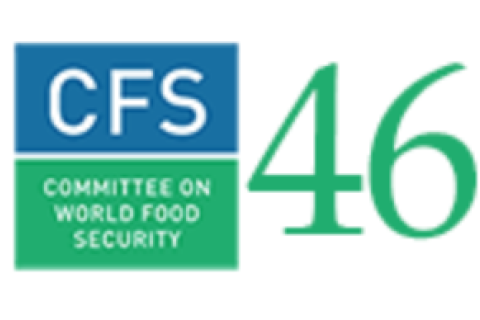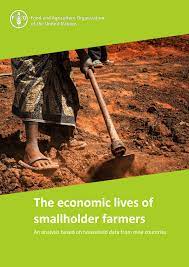
Average income of small-scale food producers, by sex and indigenous status
Last updated on 1 February 2022
This indicator is currently classified as Tier II. The Food and Agriculture Organization of the United Nations (FAO) is the main Custodian agency for this indicator in cooperation with the World Bank.
Unit of measure: Average annual income of small-scale food producers (in constant PPP 2011 USD) complemented by average income of large-scale food producers (in constant PPP 2011 USD)
Why is this indicator important?
This indicator measures the incomes of small-scale producers as a means of eliminating hunger and achieving other SDGs (e.g., poverty alleviation). Ending hunger requires long-term, sustainable food production systems and resilient agricultural practices. Developing efficient and robust food production programs to the boost agricultural productivity of small-scale producers is essential to maintain food supplies, increase incomes for poor and vulnerable groups, and feed the planet. It also contributes to strengthening rural development.
By tracking the income of small-scale producers by sex, community of reference, and enterprise size, data collected for indicator 2.3.2 enables governments to shape, prioritize, and invest in policies and measures that effectively boost agricultural productivity, drive economic growth, and eliminate hunger in particular for small-scale food producers, including women, Indigenous Peoples, family farmers, and pastoralists.
How is the indicator measured and monitored?
Data and information on income of small-scale producers is limited in many countries, but better accessible compared to the information available for indicator 2.3.1. Similarly, information is often collected at household level instead of food production unit level. The indictor can be disaggregated by sex, type of enterprise, and by community of reference.
According to the metadata brief, sources of information are either agricultural surveys, or agricultural modules in integrated household surveys (e.g., LSMS-ISA) organized by the national statistical agencies, with the necessary support from the World Bank, FAO and other international agencies. FAO has been working on computing the indicator for eight developing countries in Sub-Sahara Africa based on data collected from the Living Standards Measurement Study-Integrated Surveys on Agriculture (LSMS-ISA) surveys. Results have not been disseminated yet. In collaboration with IFAD and the World Bank, FAO also promotes the Agricultural and Rural Integrated Surveys project (AGRISurvey) which collects relevant data on an annual basis.
By Anne Hennings, peer-reviewed by FAO.
Official indicator data
The income from on-farm production activities includes income from crop production, livestock production, fisheries and aquaculture production, and from forestry production. The indicator is computed as annual income.
* Select "year" below to see the most recent data for more countries.
Other related indicators on Land Portal
In addition to the official indicator data, the following indicators provide information concerning the importance of agriculture in a given country or the distribution of land.
| Indicator | Min-Max Number of years |
Countries / Obs | Min / Max Value |
|---|---|---|---|
| Agriculture - Value Added | |||
| Employees in Agriculture - Female (% of female employment) | |||
| GDP per capita, PPP (constant 2011 international $) |
High-Level Political Forum 2019 (HLPF)
The High-level Political Forum, United Nations central platform for follow-up and review of the 2030 Agenda for Sustainable Development and the Sustainable Development Goals, provides for the full and effective participation of all States Members of the United Nations and States members of specialized agencies.
Committee on World Food Security (CFS 46)
CFS 46 is from 14 – 18 October 2019 at FAO, Rome, Italy and will be the first major global meeting on food security and nutrition after the High Level Political Forum SDG Summit in New York in September 2019. The SDGs will be the theme of the week with a particular focus on ways to accelerate SDG 2 – zero hunger.
Ten Signs of an Impending Global Land Rights Revolution
By Chris Jochnick, President and CEO of Landesa
The development community has experienced various “revolutions” over the years – from microfinance to women’s rights, from the green revolution to sustainable development. Each of these awakenings has improved our understanding of the challenges we face; each has transformed the development landscape, mostly for the better.
Big brands like Unilever aren't the answer to helping Africa's farmers
By: Bill Vorley
Date: August 31st 2016
Source: The Guardian
Global brands have attempted to work more closely with low-income farmers in Africa, but informal markets may offer better terms
Linking low-income communities to the supply chains of large corporations - so-called inclusive business - has been a major trend over the past decade.
Paginación
The economic lives of smallholder farmers
About two-thirds of the developing world’s 3 billion rural people live in about 475 million small farm households, working on land plots smaller than 2 hectares. 1 Many are poor and food insecure and have limited access to markets and services. Their choices are constrained, but they farm their land and produce food for a substantial proportion of the world’s population.
The Distributional Impact of Fiscal Policy in South Africa
This paper uses the 2010/11 Income and
Expenditure Survey for South Africa to analyze the
progressivity of the main tax and social spending programs
and quantify their impact on poverty and inequality. The
paper also assesses the redistributive effectiveness of
Income Diversification Patterns in Rural Sub-Saharan Africa : Reassessing the Evidence
Is Africa's rural economy
transforming as its economies grow? This paper uses
comparable income aggregates from 41 national household
surveys from 22 countries to explore the extent of income
diversification among rural households in Sub-Saharan
Africa, and to look at how income diversification in
Land in numbers: Livelihoods at a tipping point
Numbers can tell a compelling story. In this brochure, the numbers highlight how much we rely on productive land. Amongst other valuable services, land feeds our families, provides fresh water and powers our future ambitions. Much of the data collected here, however, demonstrate how close we are to pushing our relationship with the land to breaking point.
Investing in Smallholder Farmers to Feed the Future
Tim Fella, Senior Land Tenure and Conflict Advisor for USAID’s Land Tenure and Resource Management Office wrote an article that was featured in Devex's Newswire newsletter last week. An excerpt appears below.
Paginación
![]()

By 2030, double the agricultural productivity and incomes of small-scale food producers, in particular women, indigenous peoples, family farmers, pastoralists and fishers, including through secure and equal access to land, other productive resources and inputs, knowledge, financial services, markets and opportunities for value addition and non-farm employment
Indicator details
The indicator is conceptually clear, has an internationally established methodology and standards are available, but data is not regularly produced by countries.
Key dates:









